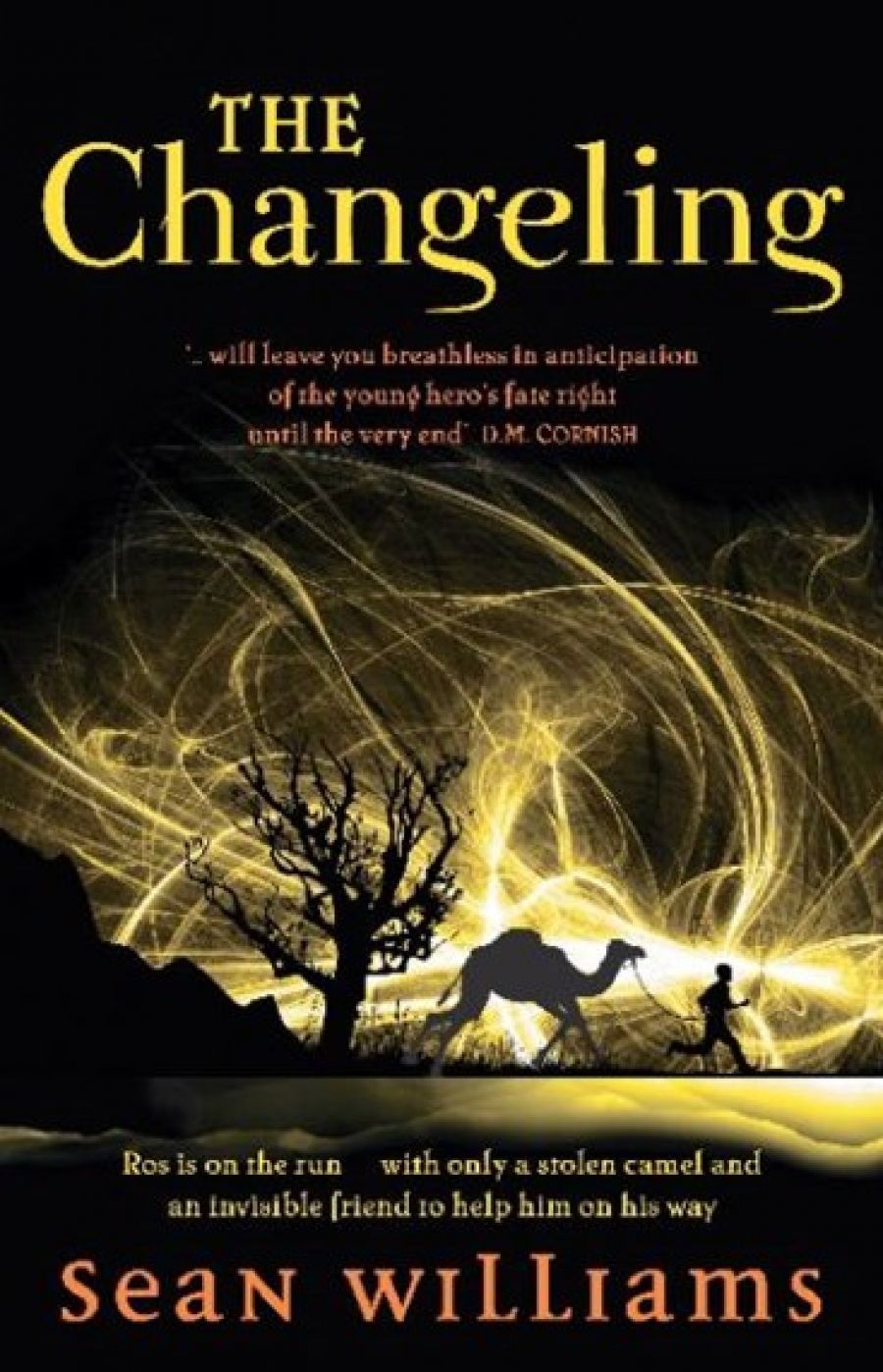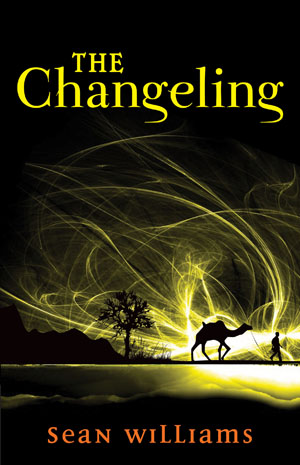
- Free Article: No
- Contents Category: Fiction
- Custom Article Title: King of chameleons
- Review Article: Yes
- Article Title: King of chameleons
- Online Only: No
- Custom Highlight Text:
Chameleons are the ultimate multi-taskers. With distinctive eyes that can rotate and focus separately, these fascinating creatures can spot future trends while winking a fond farewell to past achievements. They can blend in with their surroundings if the mood takes them, or they can adopt a crimson flush to underscore their need to communicate. And when they write, they publish five books across several genres in one year, and look just like Sean Williams.
- Book 1 Title: The Changeling
- Book 1 Biblio: Harper Collins, $14.99 pb, 176 pp
- Book 1 Cover Small (400 x 600):

- Book 1 Cover (800 x 1200):

The Changeling is Williams’s first official foray into the world of children’s literature, although one could easily categorise his Books of the Change trilogy (2002) as young adult fiction. Set in the familiar pseudo-Australian landscape that played a fundamental role in shaping Williams’s Change trilogy, as well as the second and third instalments of his Books of the Cataclysm trilogy (2004–06), The Changeling opens with a land ravaged by drought. Ros, the novel’s young hero, lives on a precarious farm; and when his family hires a ‘weather-worker’ to summon the absent rains, Ros witnesses desperation firsthand.
The adult eye observes that the state of the land in this novel is symbolic of Ros’s own burgeoning existence. His family life is stifling; he suffers at the hands of his dreadful father, his distant and depressive mother, and his convincingly malevolent sister. Despite this neglect, we soon become aware that latent energy simmers within his frail form. Ros is visited by Escher, an invisible entity who befriends him, and thus we learn that the mysterious ‘Change’ is strong within both Ros and the land he inhabits. This connection between the protagonist, the land and the ‘Change’ becomes overt as the rains fall at a ‘watershed’ moment in Ros’s life: the sky breaks open above the farmstead just as Ros uses his newfound powers to escape his dangerous family.
Escher, Ros’s invisible friend and accomplice, is an unsettling character. There are no physical indicators of his age (for much of the novel he is a bodiless voice), but his authoritative tone and worldly knowledge imply that he is much older than Ros. As a result, the adult eye immediately suspects that there is something sinister about this grown-up character who unexpectedly materialises in the child’s bedroom at night. Nevertheless, children reading this story will undoubtedly be attracted to Escher, much as Ros is. His ability to sneak into secret spaces, his apparent willingness to help Ros at all costs, and his single-minded devotion to their ‘friendship’ make him seem like the ideal best friend for any lonely child. Although Escher’s behaviour in the story is blatantly predictable to adults, children will certainly be taken in by his charms.
Both younger and older readers will agree that The Changeling’s peripheral characters are far more engaging than the novel’s protagonist. Williams is incredibly imaginative when he moulds his characters, and he did not hold back when he created the creepy antagonists in this book. Kuller, a weather-worker cum golem-hunter with tattooed hands and a tendency to whistle incessantly, is made of the stuff of nightmares. The threat of the Golem of Omus, and the voice of yet another ghost-like figure, add to the Gothic tone of this novel. Finally, Vasoph, a massive horned ‘man’kin’ with a mind for ciphers, is a brilliant reinterpretation of the ‘monster with a heart of gold’ trope.
Unfortunately, from an adult’s point of view, strategic narrative simplifications have been detrimental to Ros’s characterisation. While adults can intellectually acknowledge the harshness of Ros’s situation, his rapid acceptance of change (including the ‘Change’) and the ease with which he surmounts challenges distances us from him emotionally. To those readers familiar with The Change trilogy, Ros’s easy understanding and mastery of the magical ‘Change’ defies the logic of the world in which the books are set. Although he is ‘The Changeling’ – and one can only assume that this title is a nod to Ros’s extraordinary prowess in the ‘Change’ as much as it hearkens back to Irish folklore and Yeats’s poem ‘The Stolen Child’ – it is hard to reconcile the ease with which he uses his new powers with Sal’s lengthy struggles with these same forces in The Stone Mage and the Sea (2002). Unlike Sal, Ros leaps over such obstacles in a manner of a few pages as the narrative clips along at breakneck speed. However, these ‘drawbacks’ are undoubtedly the features that will enchant young readers the most, and will ensure that they keep reading until the last page.
Despite these minor quibbles, one can safely say that Sean Williams has firmly established himself as king of chameleons with The Changeling. This novel will introduce a new generation of readers to Williams’s diverse speculative works. Readers of all ages will want to keep both eyes focused on what he comes up with next.


Comments powered by CComment